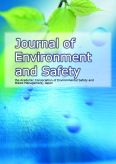Volume 4, Issue 1
Displaying 1-7 of 7 articles from this issue
- |<
- <
- 1
- >
- >|
Original article
-
2013Volume 4Issue 1 Pages 1_3-1_8
Published: 2013
Released on J-STAGE: April 23, 2013
Download PDF (609K) -
2013Volume 4Issue 1 Pages 1_9-1_14
Published: 2013
Released on J-STAGE: April 23, 2013
Download PDF (604K) -
2013Volume 4Issue 1 Pages 1_15-1_23
Published: 2013
Released on J-STAGE: April 23, 2013
Download PDF (810K) -
2013Volume 4Issue 1 Pages 1_25-1_37
Published: 2013
Released on J-STAGE: April 23, 2013
Download PDF (1289K)
Topics & Reports
-
2013Volume 4Issue 1 Pages 1_39-1_47
Published: 2013
Released on J-STAGE: April 23, 2013
Download PDF (902K) -
2013Volume 4Issue 1 Pages 1_49-1_52
Published: 2013
Released on J-STAGE: April 23, 2013
Download PDF (355K)
Preview
-
2013Volume 4Issue 1 Pages 1_53-1_58
Published: 2013
Released on J-STAGE: April 23, 2013
Download PDF (506K)
- |<
- <
- 1
- >
- >|
